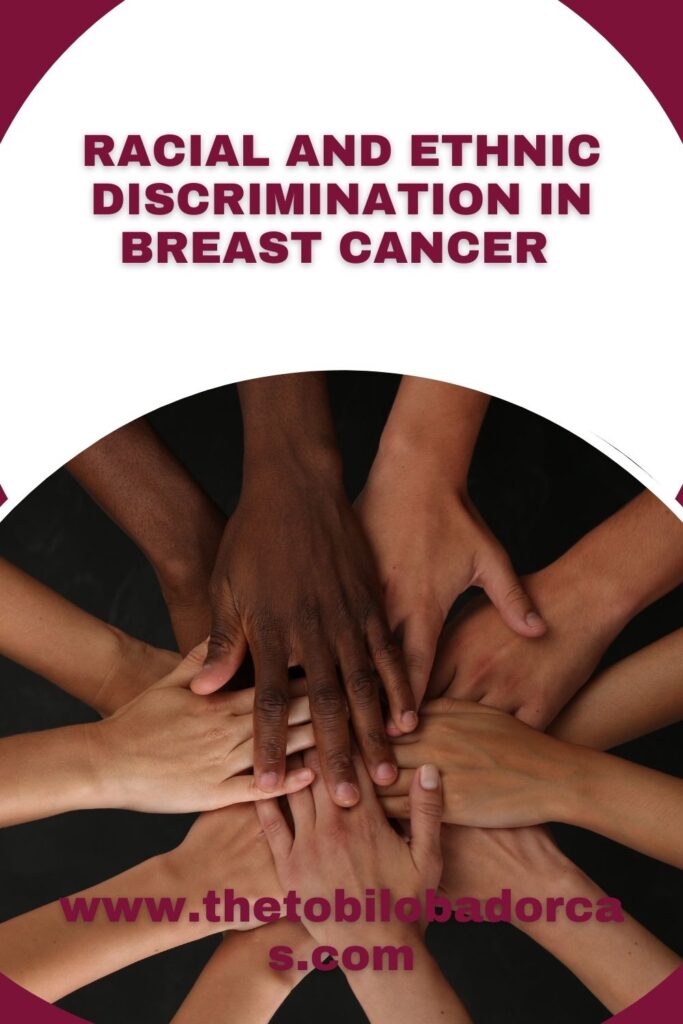Breast cancer, a leading cause of cancer-related mortality among women worldwide, has long been the focus of extensive research and public health initiatives. Despite advances in screening, diagnosis, and treatment, significant disparities persist in breast cancer outcomes, particularly along racial and ethnic lines. These disparities manifest in various forms, including differences in incidence rates, access to care, treatment options, and ultimately, survival outcomes. This blog post delves into the multifaceted nature of these disparities, examining the social, economic, biological, and systemic factors that contribute to the unequal burden of breast cancer among different racial and ethnic groups.
The Landscape of Breast Cancer Disparities
The incidence of breast cancer varies considerably across racial and ethnic groups. White women generally have the highest incidence of breast cancer, yet African American women are more likely to be diagnosed at a younger age and with more aggressive forms of the disease. For instance, triple-negative breast cancer (TNBC), a subtype that is more difficult to treat and has a poorer prognosis, is disproportionately found among African American women. On the other hand, Hispanic and Asian women tend to have lower incidence rates compared to White women but often face challenges related to late-stage diagnosis and access to appropriate care.
The disparities extend beyond incidence to survival rates. African American women have a 40% higher breast cancer mortality rate than their White counterparts, despite a lower overall incidence of the disease. This alarming statistic underscores the critical need to understand the underlying causes of these disparities.

Socioeconomic and Systemic Barriers
Socioeconomic status (SES) is a key determinant of health outcomes, and its impact on breast cancer disparities is profound. Low SES is often associated with limited access to healthcare, which can lead to delays in diagnosis and treatment. Women from lower-income households or marginalized communities may face financial barriers that prevent them from obtaining timely mammograms, leading to later-stage diagnoses and worse outcomes.
Healthcare access is further complicated by systemic issues such as insurance coverage. In the United States, racial and ethnic minorities are more likely to be uninsured or underinsured, which limits their access to preventive services, timely diagnoses, and high-quality treatment options. Even when insurance is available, racial minorities often receive care in lower-resourced healthcare settings, where the quality of care may be inferior. These systemic barriers contribute to the disparities observed in breast cancer treatment and survival.
The Role of Biological Factors
Biological differences also play a role in the racial and ethnic disparities observed in breast cancer outcomes. Research suggests that genetic factors may contribute to the higher prevalence of aggressive breast cancer subtypes, such as TNBC, among African American women. These subtypes not only have fewer treatment options but also tend to have a poorer prognosis.
Additionally, variations in tumor biology across racial and ethnic groups may influence the effectiveness of certain treatments. For example, hormonal therapies that target estrogen receptor-positive (ER+) breast cancers may be less effective in populations where ER-negative or hormone receptor-negative subtypes are more common, as is the case with African American women. This difference in tumor biology highlights the importance of personalized medicine and the need for more inclusive clinical trials that reflect the diversity of the patient population.
Cultural and Behavioral Influences
Cultural beliefs and behaviors also contribute to disparities in breast cancer outcomes. In some communities, cultural stigma associated with cancer can deter women from seeking screening and treatment. Language barriers and health literacy challenges further complicate the situation, particularly among immigrant populations. These factors can lead to delays in seeking care, non-adherence to treatment protocols, and a reduced likelihood of participating in clinical trials.
Moreover, disparities in health behaviors, such as breast self-examination practices and follow-up care after abnormal mammogram results, can contribute to the unequal burden of breast cancer. Public health initiatives aimed at educating women about the importance of early detection and treatment adherence must be culturally sensitive and tailored to the specific needs of different communities.
The Impact of Healthcare Provider Bias
Implicit bias among healthcare providers is another factor that contributes to racial and ethnic disparities in breast cancer treatment and outcomes. Studies have shown that minority patients are less likely to receive recommended cancer treatments, such as radiation therapy or chemotherapy, compared to White patients, even when accounting for insurance status and other socioeconomic factors. This disparity may be partially attributed to provider biases, whether conscious or unconscious, that affect decision-making and the quality of care provided.
Addressing these biases requires a multifaceted approach, including training healthcare providers in cultural competence, increasing diversity within the medical profession, and implementing standardized treatment protocols that minimize the potential for bias in clinical decision-making. Ensuring that all patients receive equitable care is crucial to reducing the disparities in breast cancer outcomes.
The Role of Research and Clinical Trials
The underrepresentation of racial and ethnic minorities in breast cancer research and clinical trials is a significant barrier to understanding and addressing disparities. Clinical trials often do not adequately reflect the diversity of the patient population, leading to a lack of data on how different treatments may perform across various racial and ethnic groups. This lack of representation can result in treatments that are less effective for certain populations or that fail to account for the unique needs of minority patients.
Efforts to increase minority participation in clinical trials are essential for developing treatments that are effective across all populations. This includes addressing the historical mistrust of the medical system among some minority communities, as well as removing barriers to trial participation, such as transportation issues, financial constraints, and lack of information about trial opportunities.
Strategies for Reducing Disparities
Reducing racial and ethnic disparities in breast cancer outcomes requires a comprehensive approach that addresses the various factors contributing to these disparities. Key strategies include:
- Improving Access to Care: Expanding access to affordable healthcare through policy initiatives, such as Medicaid expansion, can help ensure that all women, regardless of their racial or ethnic background, have access to preventive services, timely diagnosis, and high-quality treatment.
- Enhancing Health Education and Outreach: Culturally tailored health education programs can raise awareness about the importance of breast cancer screening and early detection in minority communities. These programs should address cultural beliefs and barriers to care, and provide information in multiple languages to reach a broader audience.
- Increasing Diversity in Clinical Trials: Efforts to recruit more diverse participants in clinical trials are crucial for developing treatments that are effective across all populations. This includes building trust with minority communities and providing support to overcome logistical barriers to trial participation.
- Addressing Provider Bias: Healthcare providers should receive training in cultural competence and implicit bias to ensure that all patients receive equitable care. This training should be accompanied by efforts to increase diversity within the medical profession and to implement standardized treatment protocols.
- Fostering Community Partnerships: Collaborating with community organizations, religious institutions, and other trusted entities within minority communities can help bridge the gap between healthcare providers and patients. These partnerships can play a vital role in disseminating information, providing support, and encouraging participation in screening and treatment programs.
Conclusion
Racial and ethnic disparities in the treatment and survival of breast cancer are complex and multifaceted, arising from a combination of socioeconomic, biological, cultural, and systemic factors. Addressing these disparities requires a concerted effort from healthcare providers, policymakers, researchers, and communities. By improving access to care, enhancing health education, increasing diversity in clinical trials, and addressing provider biases, it is possible to reduce these disparities and ensure that all women have an equal opportunity to survive and thrive after a breast cancer diagnosis. The journey towards equity in breast cancer care is challenging, but it is a critical endeavor that can save lives and improve the quality of life for countless women across racial and ethnic lines.










Pingback: Black Women More Likely to Die of Breast Cancer Than White